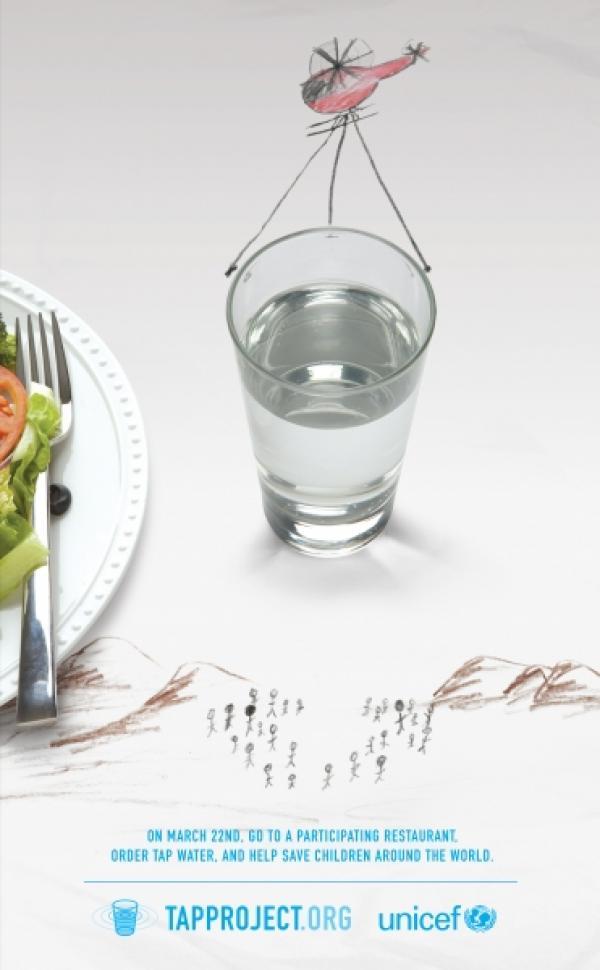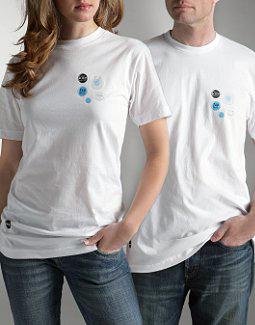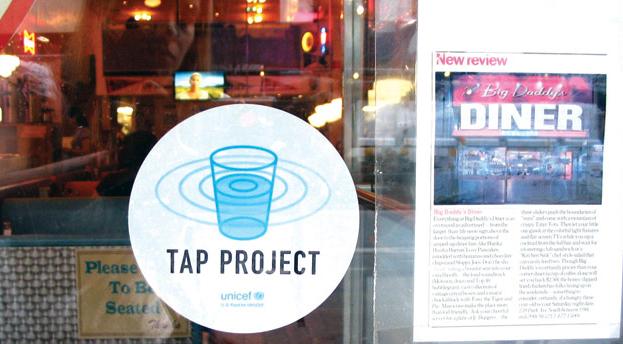
We’ve all been there. After entering a restaurant, the waiter takes you to your table, and hands over a glass of water with the menu. The water is usually free of charge. (In Taiwan, we are served boiled water, while in the US, they provide drinkable tap water).
Tap water is something we take for granted, something accessible just by turning on the faucet. Amazingly, one out of five children around the world cannot have clean water to drink on a daily basis. As a result, 6,000 precious lives are lost each day.
Information like that are not news to the common people, it’s just that we are not “living it” ourselves. Actions of charity are often distracted by everyday life even after our compassion is evoked.
Creative chairman of Droga5, David Droga, decided to help these children and raise concern on this issue through UNICEF, as a means to make clean water something available to every child. The question remains: How can it be done?
David Droga launched the Tap Water Project on World Water Day (March 22nd) with the help of UNICEF to create a brand that doesn’t belong to any corporation — the Tap Water. The project of this “branding,” is known as the Tap Project. The most convenient thing about it is that, you don’t need to change a thing in your daily life. Unbelievable, right?
Droga asked patrons of several participating restaurants in New York to tack on a minimum of $1 to their bill for every glass of tap water they drink and donated to UNICEF on behalf of the diners. This action alone will provide drinking water to 40 children a day.
Thinking from the restaurant owner’s perspective: Not only do you get to promote your restaurant through such an event, you are actually doing good for a cause. What’s not to like about this project? As a result, UNICEF earned over 5 billion USD on that single day with over 300 restaurants participating in the Tap Water Project. Many students posted their self-made posters all around the Big Apple, and it paid off, too. Celebrities and media personalities also jumped on board to garner more supporters for the project. Most importantly, it inspired UNICEF to turn this into an annual event that will reach out to more children in need.

▲Promotional poster designed by students

▲Tap Project T-shirt designed by DKNY
There are a few things worth mentioning about this particular case:
1. This brand is a brand that belongs to no one. You cannot register for it, and just by associating it with a unique logo, it becomes a brand in itself. This is a rare case in branding. A brand “belonging to the people” is created.
2. The product was always there. It did not need any packaging, promoting, delivering or naming. We come in contact with it every day, so basically, it is abundant. The thing is, it never crossed our minds that this “everyday thing” could become a product.
3. The brand came with a cause and story that everyone wanted to associate itself with. Initiation was easy, too: Just slap on the sticker at the corner of the restaurant window. The real cause behind this branding — charity — becomes easy as pie this way.

▲ The Tap Project sticker on a restaurant window.
The project launched in 2007 and earned many favorable reviews in the international commercial industry. It cost close to nothing for UNICEF, yet its influence was so great that it set an example for all future projects to come. It took a simple concept, and turned it into a truly powerful idea. As they say, “nothing is impossible as long as you have creativity”!
References: unicef.org, YouTube, www. scottandjanuary. com, idunited. wordpress. com
——–
About the author
Internet Marketing Observer: Mika
Born in the 60s, and enrolled in the consumer marketing industry for over a decade.
Experienced Brand Strategic Planning, Product Innovation and all the way to Product Launching and Marketing.
Follows the status of traditional marketing as well as changes in Web2. 0 and Social Media.
Our blog: jabamay. blogspot. com
———
